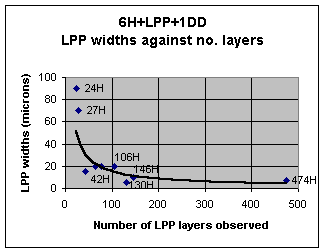Is there a finite
limit to polytypism in silicon carbide ?
J.F. Kelly
Industrial Materials Group, School of Crystallography,
Birkbeck College, University of London, Malet Street, London WC1E 7HX, U.K.
Silicon carbide is a burgeoning wide band-gap (EG~3eV) abrasive, gemstone that has earned the soubriquet Semiconductor of the 21st century. Ultimately SRS-XRDT has been instrumental in unlocking the secrets of its prolific tendency to form polytypes. Synchrotron radiation source (SRS) X-ray diffraction topography (XRDT) has proved to be a powerful tool in investigating the spatial extent of one-dimensional disorder (1DD), long-period polytypes (LPP'’)[1] and polytype layer boundaries in SiC.
A novel adaptation of the SRS-XRDT technique, known as edge topography has been used in constructing neighbourhood coalescence models [2]. These are now providing a wealth of numerical data, prompting questions about the limits of polytypism and disorder in SiC A simple mathematical relationship t = kN (- n) between the polytype thickness (t in microns) and the number of hexagonal layers (N) in the polytype stacking repeat of long-period polytypes LPP’'s has been discovered. Values for k and n have been determined from plots of the data, shown in Figure 1 . Analysis shows [3] that:

Figure 1.
References
1. Kelly J.F., Barnes P., Fisher G.R., "Long period polytype boundaries in silicon carbide" Ferroelectrics, 250 187-190 (2001) Proceedings of Aperiodic 2000 Conference
2. Kelly J.F., Barnes P., Fisher G.R., "The use of synchrotron edge-topography to study polytype nearest neighbour relationships in SiC" Radiat. Phys. Chem., 45, 509-522, (1995)
3. Kelly J.F., Fisher G.R., Barnes P. doi:10.1016/j.materresbull.2004.10.008 "Correlation between layer thickness and periodicity of long polytypes in silicon carbide" Mat. Res. Bull. Vol. 40 Issue 2 p249-255 (2005) Elsevier